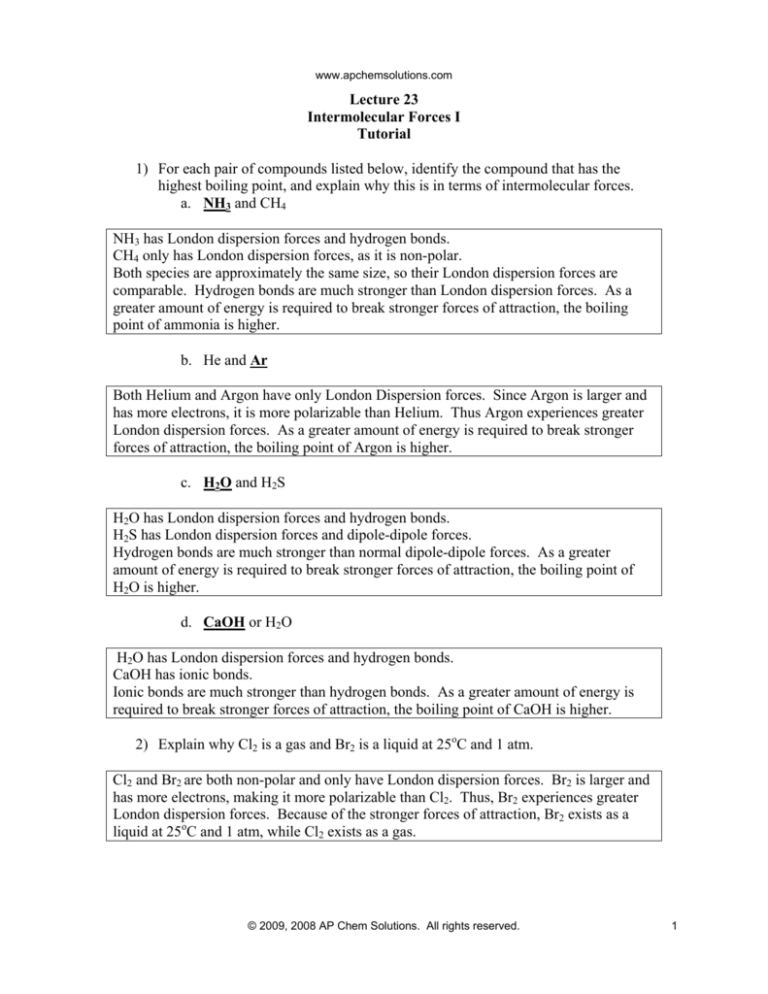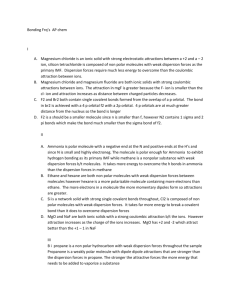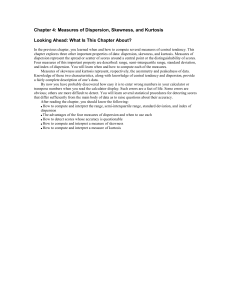
www.apchemsolutions.com
Lecture 23
Intermolecular Forces I
Tutorial
1) For each pair of compounds listed below, identify the compound that has the
highest boiling point, and explain why this is in terms of intermolecular forces.
a. NH3 and CH4
NH3 has London dispersion forces and hydrogen bonds.
CH4 only has London dispersion forces, as it is non-polar.
Both species are approximately the same size, so their London dispersion forces are
comparable. Hydrogen bonds are much stronger than London dispersion forces. As a
greater amount of energy is required to break stronger forces of attraction, the boiling
point of ammonia is higher.
b. He and Ar
Both Helium and Argon have only London Dispersion forces. Since Argon is larger and
has more electrons, it is more polarizable than Helium. Thus Argon experiences greater
London dispersion forces. As a greater amount of energy is required to break stronger
forces of attraction, the boiling point of Argon is higher.
c. H2O and H2S
H2O has London dispersion forces and hydrogen bonds.
H2S has London dispersion forces and dipole-dipole forces.
Hydrogen bonds are much stronger than normal dipole-dipole forces. As a greater
amount of energy is required to break stronger forces of attraction, the boiling point of
H2O is higher.
d. CaOH or H2O
H2O has London dispersion forces and hydrogen bonds.
CaOH has ionic bonds.
Ionic bonds are much stronger than hydrogen bonds. As a greater amount of energy is
required to break stronger forces of attraction, the boiling point of CaOH is higher.
2) Explain why Cl2 is a gas and Br2 is a liquid at 25oC and 1 atm.
Cl2 and Br2 are both non-polar and only have London dispersion forces. Br2 is larger and
has more electrons, making it more polarizable than Cl2. Thus, Br2 experiences greater
London dispersion forces. Because of the stronger forces of attraction, Br2 exists as a
liquid at 25oC and 1 atm, while Cl2 exists as a gas.
© 2009, 2008 AP Chem Solutions. All rights reserved.
1
www.apchemsolutions.com
3) Explain why ethane C2H6 melts at –183oC and nonane C9H20 melts at –54oC.
C2H6 and C9H20 are both non-polar and only have London dispersion forces. C9H20 is
larger and has more electrons, making it more polarizable than C2H6. Thus, C9H20
experiences greater London dispersion forces. Because of the stronger forces of
attraction, C9H20 requires more energy to melt than does C2H6.
4) Explain why oxygen gas, O2, is able to dissolve in water.
Oxygen gas is a non-polar molecule, and water is a polar molecule. When oxygen gas
dissolves in water, the polar water molecule induces a dipole in the non-polar oxygen
molecule. The dipole-induced dipole forces of attraction are able to hold a small
concentration of oxygen molecules in the water.
© 2009, 2008 AP Chem Solutions. All rights reserved.
2









